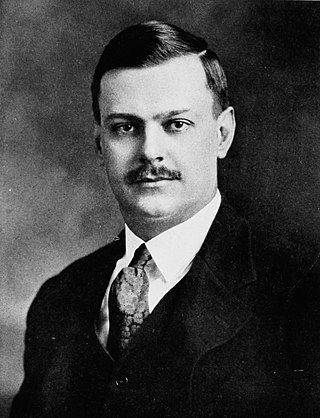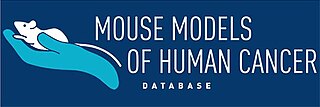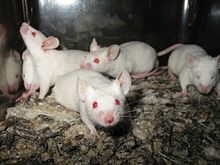Inbred strains are individuals of a particular species which are nearly identical to each other in genotype due to long inbreeding. A strain is inbred when it has undergone at least 20 generations of brother x sister or offspring x parent mating, at which point at least 98.6% of the loci in an individual of the strain will be homozygous, and each individual can be treated effectively as clones. Some inbred strains have been bred for over 150 generations, leaving individuals in the population to be isogenic in nature. Inbred strains of animals are frequently used in laboratories for experiments where for the reproducibility of conclusions all the test animals should be as similar as possible. However, for some experiments, genetic diversity in the test population may be desired. Thus outbred strains of most laboratory animals are also available, where an outbred strain is a strain of an organism that is effectively wildtype in nature, where there is as little inbreeding as possible.

ENU, also known as N-ethyl-N-nitrosourea (chemical formula C3H7N3O2), is a highly potent mutagen. For a given gene in mice, ENU can induce 1 new mutation in every 700 loci. It is also toxic at high doses.

The laboratory mouse or lab mouse is a small mammal of the order Rodentia which is bred and used for scientific research or feeders for certain pets. Laboratory mice are usually of the species Mus musculus. They are the most commonly used mammalian research model and are used for research in genetics, physiology, psychology, medicine and other scientific disciplines. Mice belong to the Euarchontoglires clade, which includes humans. This close relationship, the associated high homology with humans, their ease of maintenance and handling, and their high reproduction rate, make mice particularly suitable models for human-oriented research. The laboratory mouse genome has been sequenced and many mouse genes have human homologues. Lab mice are sold at pet stores for snake food and can also be kept as pets.

Clarence Cook Little was an American genetics, cancer, and tobacco researcher and academic administrator, as well as a proponent of eugenics.

Laboratory rats or lab rats are strains of the rat subspecies Rattus norvegicus domestica which are bred and kept for scientific research. While less commonly used for research than laboratory mice, rats have served as an important animal model for research in psychology and biomedical science.

The Jackson Laboratory is an independent, non-profit biomedical research institution which was founded by Clarence Cook Little in 1929. It employs over 3,000 employees in Bar Harbor, Maine; Sacramento, California; Farmington, Connecticut; Shanghai, China; and Yokohama, Japan. The institution is a National Cancer Institute-designated Cancer Center and has NIH Centers of Excellence in aging and systems genetics. The stated mission of The Jackson Laboratory is "to discover the genetic basis for preventing, treating and curing human diseases, and to enable research and education for the global biomedical community."

3T3 cells are several cell lines of mouse embryonic fibroblasts. The original 3T3 cell line was established in 1962 by two scientists then at the Department of Pathology in the New York University School of Medicine, George Todaro and Howard Green. Todaro and Green originally obtained their 3T3 cells from Swiss albino mouse embryo tissue. Later, as a principal investigator position at the National Cancer Institute in Bethesda, Maryland, Todaro repeated the isolation procedure from the NIH Swiss mouse embryo with his students and established NIH-3T3 cell line.
Non-obese diabetic or NOD mice, like biobreeding rats, are used as an animal model for type 1 diabetes. Diabetes develops in NOD mice as a result of insulitis, a leukocytic infiltrate of the pancreatic islets. The onset of diabetes is associated with a moderate glycosuria and a non-fasting hyperglycemia. It is recommended to monitor for development of glycosuria from 10 weeks of age; this can be carried out using urine glucose dipsticks. NOD mice will develop spontaneous diabetes when left in a sterile environment. The incidence of spontaneous diabetes in the NOD mouse is 60–80% in females and 20–30% in males. Onset of diabetes also varies between males and females: commonly, onset is delayed in males by several weeks. The mice are known to carry IgG2c allele.

C57BL/6, often referred to as "C57 black 6", "B6", "C57" or "black 6", is a common inbred strain of laboratory mouse.

Rodents are commonly used in animal testing, particularly mice and rats, but also guinea pigs, hamsters, gerbils and others. Mice are the most commonly used vertebrate species, due to their availability, size, low cost, ease of handling, and fast reproduction rate.
A NOG (NOD/Shi-scid/IL-2Rγnull) mouse is a new generation of severely immunodeficient mouse, developed by Central Institute for Experimental Animals (CIEA) in 2000. The NOG mouse accepts heterologous cells much more easily compared with any other type of immunodeficient rodent models, such as nude mouse and NOD/scid mouse. Thus, the mouse can be the best model as a highly efficient recipient of human cells to engraft, proliferate and differentiate. This unique feature offers a great opportunity for enhancing therapy researches of cancer, leukemia, visceral diseases, AIDS, and other human diseases. It also provides applications for cancer, infection, regeneration, and hematology researches.

Major urinary proteins (Mups), also known as α2u-globulins, are a subfamily of proteins found in abundance in the urine and other secretions of many animals. Mups provide a small range of identifying information about the donor animal, when detected by the vomeronasal organ of the receiving animal. They belong to a larger family of proteins known as lipocalins. Mups are encoded by a cluster of genes, located adjacent to each other on a single stretch of DNA, that varies greatly in number between species: from at least 21 functional genes in mice to none in humans. Mup proteins form a characteristic glove shape, encompassing a ligand-binding pocket that accommodates specific small organic chemicals.
A recombinant inbred strain or recombinant inbred line (RIL) is an organism with chromosomes that incorporate an essentially permanent set of recombination events between chromosomes inherited from two or more inbred strains. F1 and F2 generations are produced by intercrossing the inbred strains; pairs of the F2 progeny are then mated to establish inbred strains through long-term inbreeding.

Abbie E. C. Lathrop was a rodent fancier who bred fancy mice and inbred strains for animal models, particularly for research on development and hereditary properties of cancer.
Mouse News Letter (MNL) was a bulletin of mouse genetics information published from 1949 to 1998. In 1990 Mouse News Letter changed its name to Mouse Genome which merged with the journal Mammalian Genome in 1998. Mouse News Letter now exists as a company, Mouse News Letter Ltd, which promotes the science of Genetics and provides funds to enable younger scientists to attend Genetics Conferences. “To survey the history of the Mouse News Letter is to see the history of mouse genetics unfold.” So wrote Mary F Lyon in 1997.
Coisogenic strains are one type of inbred strain that differs by a mutation at a single locus and all of the other loci are identical. There are numerous ways to create an inbred strain and each of these strains are unique. Genetically engineered mice can be considered a coisogenic strain if the only difference between the engineered mouse and a wild-type mouse is a specific locus. Coisogenic strains can be used to investigate the function of a certain genetic locus.
Taconic Biosciences is a private biotechnology company specializing in genetically engineered mouse and rat models, microbiome, immuno-oncology mouse models, and integrated model design and breeding services. The company was founded in 1952 as Taconic Farms. The company has three service laboratories and six breeding facilities in the U.S. and Europe, and is headquartered in Rensselaer, New York.

FVB is an albino, inbred laboratory mouse strain that is named after its susceptibility to Friend leukemia virus B.

The laboratory mouse has been instrumental in investigating the genetics of human disease, including cancer, for over 110 years. The laboratory mouse has physiology and genetic characteristics very similar to humans providing powerful models for investigation of the genetic characteristics of disease.
The Japanese house mouse or Japanese wild mouse is a type of house mouse that originated in Japan. Genetically, it is a hybrid between the southeastern Asian house mouse and the eastern European house mouse. It is thus not a unique subspecies, but is treated as such for its characteristic features. It is among the smallest house mice. Different strains such as MSM/Ms, JF1, Japanese waltzing mouse, C57BL/6J and MSKR exist following cross breeding with other house mice, and are used in different genetic and medical investigations.















